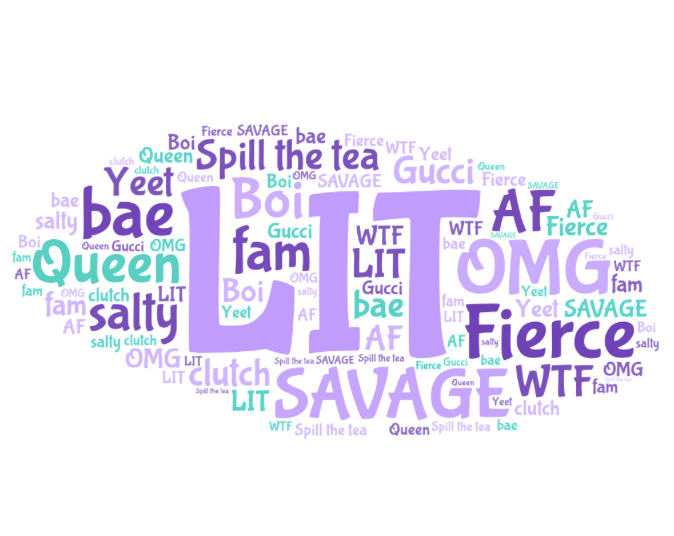Slang of Gen. Z High School Students
- Liana Wadhwani

- Aug 4, 2019
- 3 min read
Updated: Aug 5, 2019
Ever wonder where slang words like LIT and Savage come from? Well I am about to spill the tea ;)

"Slang represents humanity at its most human, and it's not feathered by borders" (Green 2014)
For most people slang is seen as the language of the “streets”, however slang is more than that. With the spread of social media, slang has become the “world wide vocabulary of young people” (Eble 2012).While there is no single definition of slang, slang can be loosely defined as an ever changing set of spoken words that provides alternate vocabulary for words that have already been named in large (Eble 2012). Slang can be seen as a “counter-language”; a language that was born in the streets and is supremely human (Green 2014). Most slang comes from marginalized groups. These groups include cultural/ethnic/racial groups, women, and people of the LGBTQ+ community.
“The oppressed create and use slang to build individual and group identity, to separate themselves from the dominant culture” (Dalzell 2010). Generally speaking, slang is exclusive to certain groups of people and related to the concept of an “in-group.” However, sometimes slang can develop into key parts of a language that are no longer exclusive to a particular marginalized group . Many of the popular slang words that have been integrated into high school culture today were first used in the LGBTQ+ community and African American Community.
Originally ‘slay’ was used in the context of battle. It noted uncontested victory pertaining to war and had an altogether negative connotation. While many of these connotations still hold today, the term is most frequently used in the context of “Beyonce slaying the MTV awards.” It is no longer used in the terms of negative cruelty but instead to represent power and strength. The first recorded use of slay in the terms of to do something really well was in the African American gay community. In the 1970-80’s, slay came to refer to when an outfit, hair, makeup, dance moves, and attitude were all perfect. It is similar to saying, “You’re killing it!”. Within ten years, slay spread throughout drag queen culture and was featured in the documentary Paris is Burning. In 2016, Beyonce made “slay” mainstream when she used it. With the advent of social media, the new meaning of “slay” was made accessible to the public at large.
“Lit” is the past participle of the word light. Light is a native word that was from Germanic. It has the meaning of “the natural agent that stimulates sight and makes things visible.” However now it has the meaning among teenagers as ‘super cool’. It was first said in the 1940’s by African American jazz artists. It initially had the meaning of the music being amazing. It then changed to mean being under the influence of drugs. However, rap culture changed the meaning to mean “super cool.” The phrase became popular in 2017 because of Travis Scott’s use of the slang word in his music.
“Queer” was originally a derogatory name for a homosexual that was used by the nonhomosexual community. In response, gay activists called themselves ‘queer’ in a prideful way. The term first entered the English lexicon in 1513. It had the meaning of something not normal or peculiar. It had no sexual reference. The Oxford English Dictionary states that the noun “queer” was first used to mean homosexual by the Marquess of Queensbury, in 1894. The 1965 printing of Webster’s New World Dictionary, e nters “queer” as slang for homosexual. Not offensive slang, just slang. During the AIDS epidemic in the 1990’s, ‘queer’ was adopted as a “positive self-label”4 to the LGBTQ+ community. Since then ‘queer’ has been a very common slang word. According to reddit, the word was really popular in 2010 and had a frequency of .0006%.
For more information on slang used by generation Z, see the pdf at the end of this post. #slang #linguistics #semanticChange
N.B You can find all my citations in the pdf and bibliography attached to this post.



Comments